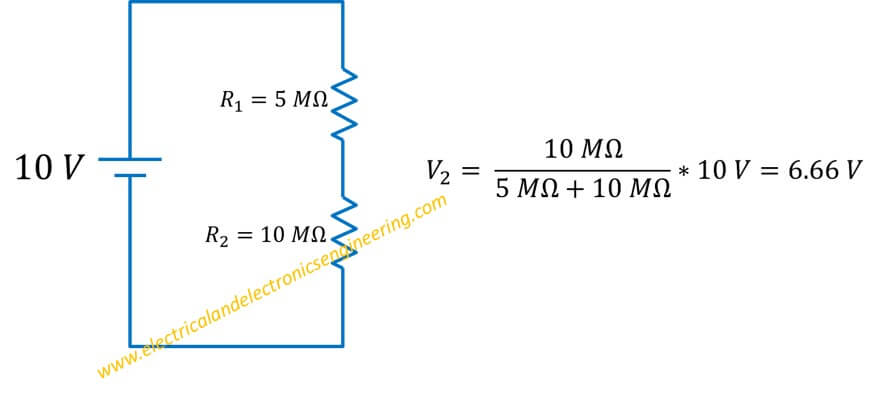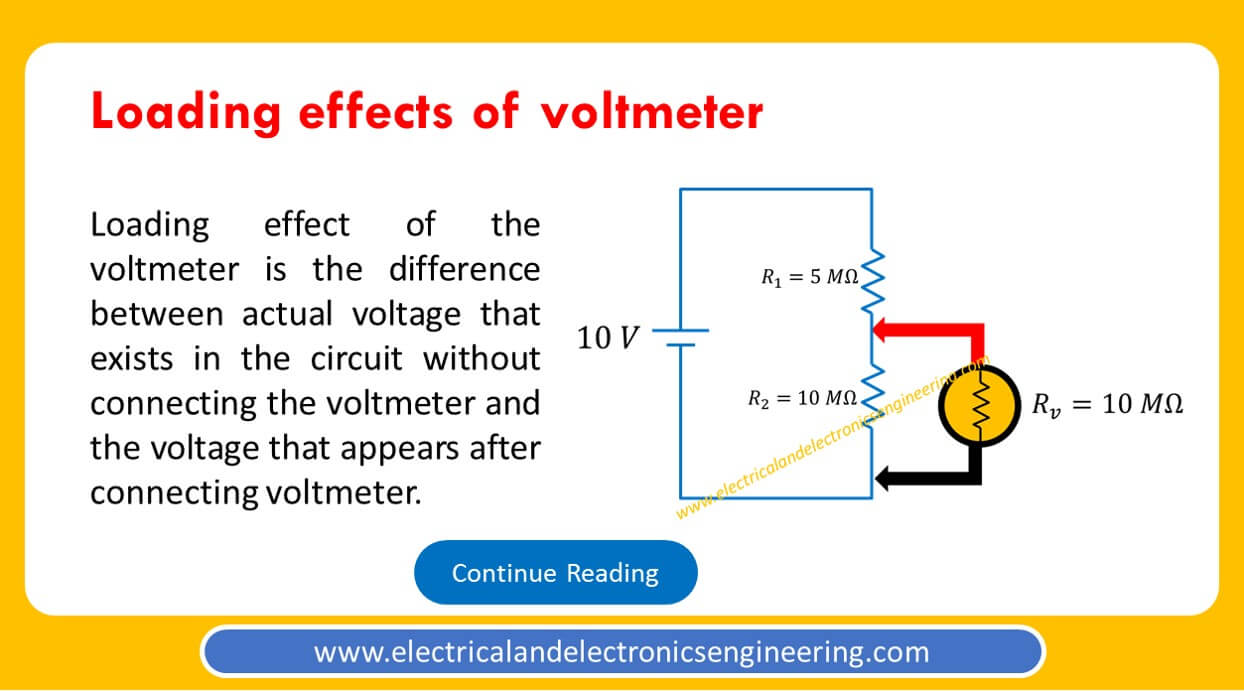Loading effect of the voltmeter is the difference between actual voltage that exists in the circuit without connecting the voltmeter and the voltage that appears after connecting voltmeter.
A voltmeter is placed across a resistor to measure its voltage. When a voltmeter connects across any resistance its internal resistance impacts the overall resistance of the circuit. This effect of change in overall resistance is known as the loading effect of the voltmeter.
To understand this consider a series circuit containing two resistors (R1 and R2) of 5 MΩ and 10 MΩ. Ideally the resistor R2 dissipates 6.66 volts across it (Using voltage divider rule).

Let’s consider that a voltmeter having an internal resistance of 10 MΩ is connected across R2. The internal resistance of voltmeter appears in parallel to the R2 resistance. Now using voltage divider rule:

The real voltage that appears across the voltmeter is 5 Volts. This difference of voltage after adding voltmeter in the circuit is the loading effect of the voltmeter.
